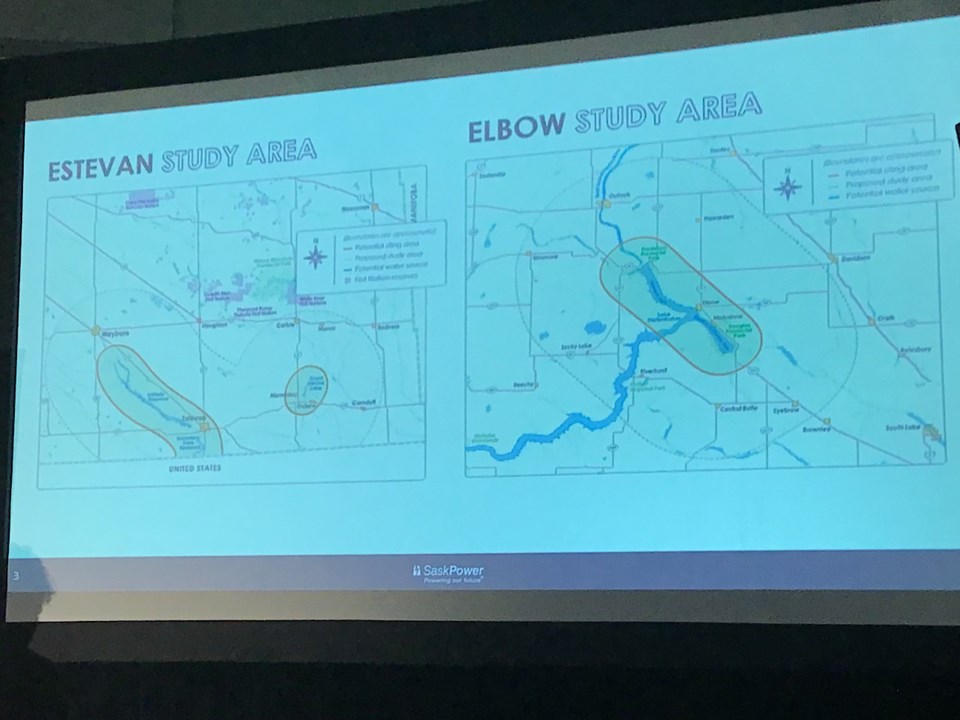SaskPower has revealed the two locations for its much-discussed small modular nuclear reactors (SMR), and Estevan is one of the options.
It makes sense that Estevan would be on the shortlist. For starters, we have the water sources needed for the power generation. Boundary and Rafferty Dam reservoirs, as well as Grant Devine Lake, are in close proximity to Estevan.
Thanks to the existing power generation facilities in the Estevan area, the transmission lines are already in place.
And with the uncertain future of coal-fired generation in Saskatchewan, including carbon capture and storage, the Crown corporation needs to look at options for power that will keep people and jobs in this area, even if those options don’t create as many jobs as coal power.
The Elbow area of central Saskatchewan is the other location SaskPower is considering.
It will be some time before we know whether SaskPower is going to proceed with SMRs. In fact, according to SaskPower, the decision won’t happen until 2029 – a year before its remaining conventional coal-fired power generating facilities are to be forced offline by the federal government.
Many of us might sit here and wonder why it’s going to take seven years to make a decision about SMR technology and a potential location. What we do know is that it’s going to be costly and it won’t happen without federal support.
If SaskPower won’t be making a decision on SMRs until 2029, then it will be several more years before it is delivering power to local residents.
And if coal-fired generation isn’t going to be an option starting in 2030, then SaskPower is going to need to find an option to bridge the gap. Solar and wind power aren’t going to get the job done.
You’re not likely going to have both SMRs and carbon capture and storage, but if you can, then that’s great.
SaskPower claims the federal government’s clean fuels standard won’t allow for further investment into coal-fired power, even with CCS technology. A lot could change in the next few years, including the federal government itself, before SaskPower has to make final decisions about its coal-fired facilities, but it’s clear that the federal Liberal government has decided that anything to do with coal-fired electricity is bad news.
People do need to shift their mindset when it comes to nuclear power and SMRs. This isn’t nuclear power the way you remember it. This is an evolving technology that is very different from what we have seen in the past.
Let’s have SMRs in the Estevan area. Let’s have solar power. SaskPower is taking a serious look at having a 100-megawatt solar facility in the Estevan area. We think that’s great. Granted, it won’t generate as much power as one of the existing units at the Boundary Dam Power Station, and it won’t employ nearly as many people as a coal-fired unit, but it’s still a nice addition to the area.
And let’s have geothermal, too. It’s proven technology when it comes to providing clean, baseload power elsewhere in the world. The efforts of Deep Earth Energy Production are on track to one day yield a facility in this area. Again, it won’t create jobs like a unit at Boundary Dam, but it could still be part of our power generation and economic options.
But above all else, let’s have carbon capture and storage.
One day technology for wind and solar power will evolve to where these can be legitimate, baseload power options. But that day is not today, and it likely won’t happen before the end of this decade. It might not be before the end of the next decade.
That’s why you still need baseload power options. Carbon capture and storage has proven to be a viable option. There have been hiccups. But as of the end of June, it has prevented nearly 4.6 million tonnes of CO2 from entering the Earth’s atmosphere since opening in October 2014.
Coal is still abundant, cheap and a reliable option for creating power. Carbon capture and storage allows it to be environmentally friendly. And so it should be a part of our power grid moving forward.
Conventional coal power’s days might be numbered in Canada, but coal with CCS technology should not.




